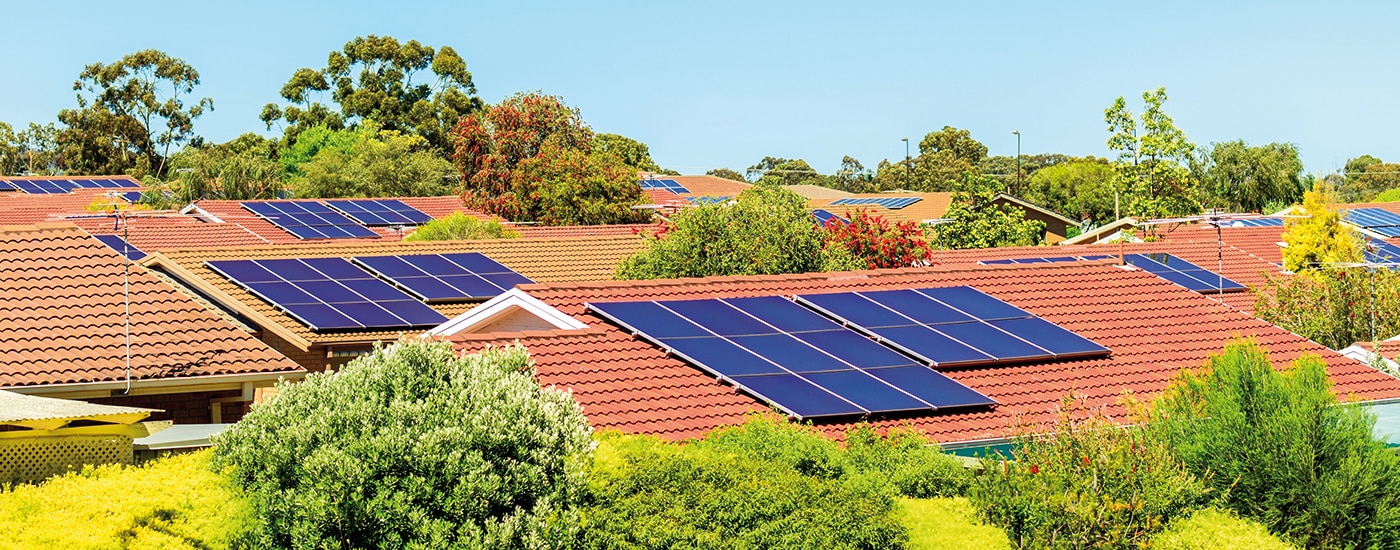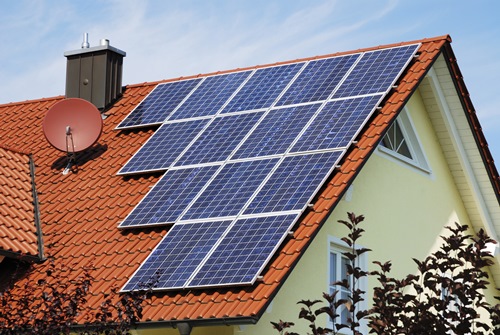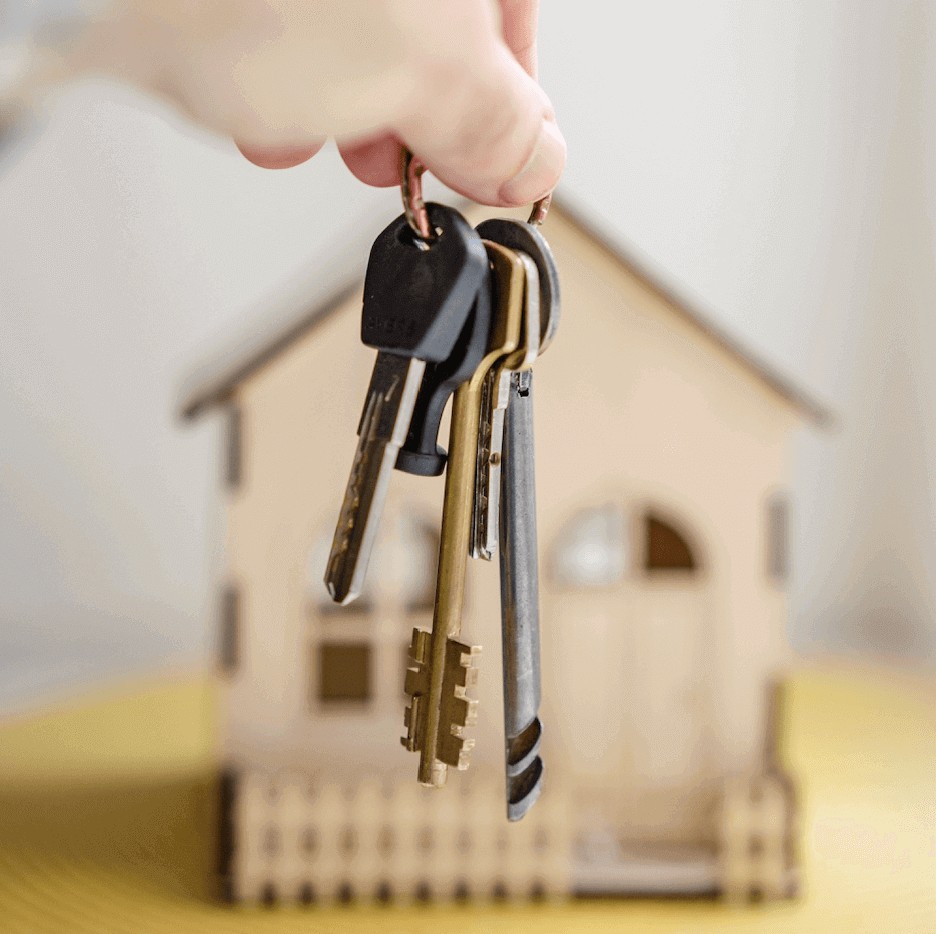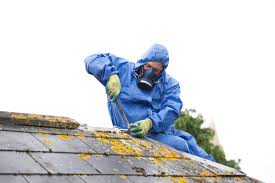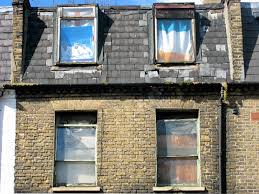Green property in 2021
- The Green Homes Grant has been extended
- Interest in green housing is increasing
- Homeowners have till 31st March 2021 to complete upgrades
In 2020, the government announced an extension of the Green Homes Grant, which attracts landlords to eco-friendly properties. The plan offers a grant to property owners to make eco-friendly renovations on their properties.
The aim is to encourage more property owners to install energy-efficient improvements—for example, insulation, heating, draught-proofing, and double and triple glazing. Renewable energy innovations, like heat pumps or solar panels, also qualify.
How does it work?
The Green Homes scheme offers funding for up to two-thirds of the improvement costs, to the value of £5,000 per household. Homeowners and landlords wishing to use the grant have until 31st March 2021 to get their upgrades completed.
What's the result?
The Green Homes Grant means that making energy efficiency improvements is more accessible. The government's extension of the grant has seen positive results alongside the public's growing awareness of environmental issues.
In 2021, almost 84% of British homeowners plan to address energy efficiency changes in their property, according to a study by City Plumbing.
Nearly 53% of households plan to invest in green measures specifically to reduce energy bills. The home improvements most usually chosen include upgrades to the cavity wall, loft, and underfloor insulation. Improving your property's insulation can have a significant impact on its energy performance.
Evan Maindonald, CEO and founder of MELT Property, believes that buyers are ready to embrace sustainable living.
"If you are looking to improve the energy efficiency of your home, a good first step would be to review your property's heating system. Old-fashioned heating systems will send utility bills rocketing and have a high carbon footprint. To reduce both, consider installing an Air Source or Ground Source Heat Pump."
Why landlords should invest in 'green' rental properties
There are numerous benefits and incentives for landlords to invest in green housing, and now couldn't be a better time.
More appealing buy-to-lets
Eco-friendly properties will help landlords make their buy-to-lets more appealing and add value to their properties.
Caters for the target tenant
Landlords who invest more in their properties to offer a place that caters to their target tenant see the most market success. Tenants are beginning to expect more from their rental properties, and as environmental issues prevail on people's minds, green housing is appealing to a wide range of tenants.
Eco-properties as an energy-efficient selling point
Landlords can now utilize eco-properties for their energy efficiency. As we all spend more time in our homes with coronavirus lockdowns, household bills go up. This will be particularly appealing for prospective tenants who are now working from home full-time.
Green mortgages as an added incentive
Lastly, green mortgages are gaining popularity. The UK population becoming increasingly eco-conscious has allowed ‘green mortgages’ to find their place in the mainstream market. The mortgages give borrowers special rates linked directly to the energy performance of their properties. This provides an added financial incentive for landlords and investors to focus on green credentials.
How to sub-let your property?
You may have heard of the term sub-letting, but what does it mean? There are some legal complications which confuse people and it is important to know what they are. It is a common belief that once you are a tenant, you can just do what you want with the property. However, this is certainly not the case.
When you are renting a property, you will likely be renting directly from a landlord who owns said property. It is equally possible to rent directly from another tenant who has rented the property from the landlord/owner. The latter is what is known as sub-letting.
In this guide on Octagon Capital will provide all the information, you will need on the topic of subletting and whether or not you will be allowed to sublet their home.
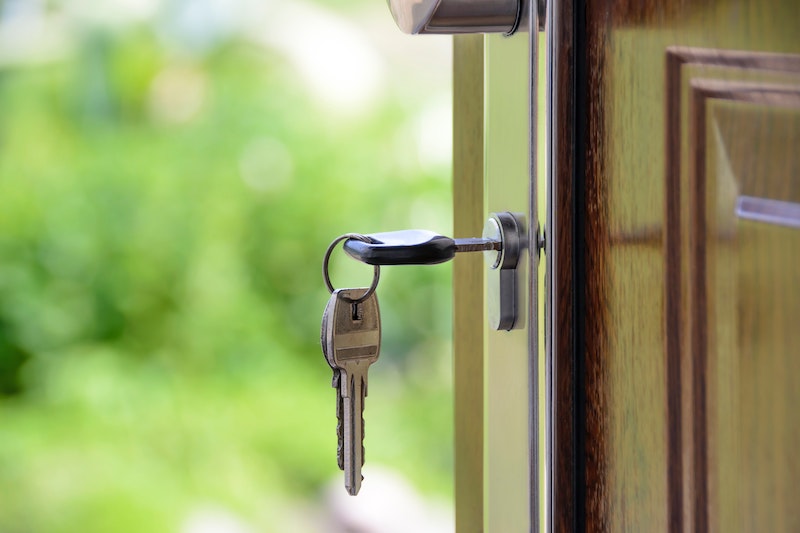
Before we get started, here are some top tips on subletting:
- Check what it says in your tenancy agreement
- In most cases, you will need to seek out permission. Therefore, you should write to your landlord explaining the situation at hand and ask if they will give you their consent to sub-let.
- Be aware that if you do not do things properly, it may lead to problems on the long-term and down the line.
What is subletting?
Subletting refers to when an existing tenant let’s all of part of their home to another person. That person is known as subtenant, and they have a tenancy for all or part of the property which is let to them. They will also have exclusive use of the accommodation that has been let to them.
For example, if it is the case that you decide to sublet your home, you are giving up possession of it. The subtenant would have exclusive use of the property and you could only enter it with their permission.
When a property is being sublet, the owner is known as the head landlord, because now there are technically two with the tenant letting to the subtenant. The tenant they rent to is called the ‘mesne’ tenant, meaning intermediate and is pronounced as ‘mean’. The mesne tenant then, of course, rents to the subtenant.
Is subletting just lodging?
This is where many people become confused, but there are differences between subletting and lodging.
A subtenant and a lodger can both rent rooms. However, a subtenant can also rent an entire property rather than just part of it. The main difference here is that a subtenant has exclusive use of their rooms and the lodger does not. The landlord will need to give their permission before they can enter the subtenant’s rooms. On the flip side, a lodgers landlord can enter the lodger's room without permission and often does so to provide services such as cleaning.
If you share some of the accommodation with your landlords such as the bathroom or a kitchen, then the rights you have are similar whether you are a subtenant or a lodger. People who share accommodation with their landlord are generally known as excluded occupiers. This is a term which is often used in the housing to help to identify your housing rights. Excluded occupiers as such have very limited rights.
What happens if you sublet your home and you are not allowed to?
You will need to seek permission before subletting all or part of your home. If you are denied permission, you are not going to be legally allowed to do so. If you do anyway, then your landlord may take action against you if they find out. For example, they may take legal action to evict you for breaking the terms of your tenancy contract.
If you are in social housing and you sublet your home unlawfully, you will be committing a criminal offence.
What are the tax rules for double glazing windows?
Double glazing has long been a major concern for landlords and those who sell it since the early 2000s. It was announced way back in the 1998 Budget that from April 2001, a concession which was to allow landlords to offset general refurbishments at their properties against tax would be eliminated.
For many households, having double glazing will mean smaller energy bills and a warmer home. In fact, 51 per of people who were surveyed in a Which? report who had double glazing said that they did buy it to make their home warmer and to reduce their energy bills by 44 per cent.
Since the abolishment, landlords have not been able to offset refurbishments against tax. Instead, they can only claim for repairs, not improvements.
Furthermore, under these new rules, landlords would be able to get tax relief for something like repairing a broken window frame. However, if that window was replaced with double glazing, this would actually be considered an improvement and therefore it would not qualify to be claimed against tax.
Change in Rules
However, a tax case had forced the Inland Revenue to change the policy surrounding double-glazing. Double glazing does not qualify for tax relief and will even be backdated in some cases.
When the rule change came in, landlords could claim for windows which had already been installed as long as they met the deadline for making changes to their self-assessment forms. Now, any double glazing installed can simply be claimed on tax.
The Revenue stated that:
"In the past, we took the view that replacing single-glazed window with double-glazed windows was an improvement and therefore capital expenditure.
But times have changed... We now accept that replacing single-glazed windows by double-glazed equivalents counts as allowable expenditure on repairs."
The change was warmly welcomed by Malcolm Harrison of the Association of Residential Letting Agents welcomed the change. He said that: "It's good news for landlords and good news for tenants."
Glazing Over
Despite such good news for landlords, finding out whether “repairs” can be offset against tax can be rather confusing still, as many of the things done to a home can be classed as a repair and an improvement.
To shed some light, Mike Warburton, a partner at accountant Grant Thornton said that the system needs to be simplified. He said:
"It is confusing to know what is and what isn't allowable under the current rules.
"I accept that if the improvement is an extension or a loft conversion it may be unreasonable.
"But the logic is that if I am repairing and upgrading part of the facilities of the house, such as the kitchen, I don't see why it should not be an allowable repair."
Can you replace double glazing yourself?
Installing new double-glazing needs to meet certain building regulations. This needs to be approved by either an installer who is registered with a Competent Person’s Scheme or by a Building Control who can verify the work themselves. Because of this, it is not really advisable to try and install double glazed windows on your own. If you are a tenant, it is best to leave it up to your landlord to sort out.
Ways to make your property more energy efficient
It is becoming increasingly more popular to make being energy efficient a priority in people’s lives. This includes making the home more energy efficient for the sake of the environment and in the hopes of saving a bit of cash in doing so. Both of these things are beneficial to you, your family and the world around you, so what are you waiting for?
With the colder months approaching, now is the perfect time to get on the road to checking your home is as energy efficient as it can possibly be to help keep those utility bills down this year. A survey which was conducted recently by Home Heat Helpline has found that
What can you do to make sure your home is more energy efficient? There are plenty of smaller and larger changes that you can make to ensure that you are doing it properly. In this guide on Bridging Loans, we are going to be going through the most popular and most effective ways alike to make your home the most energy efficient possible.
Insulate your Loft
A lot of heat from your home is lost from the roof, and if it is not efficiently insulated you could be practically burning money. The Department of Energy and Climate Change in the UK stated that British homes wasted around £500 million on pumping heat into their properties only for it to escape through poorly insulated walls and roofs.
With decent insulation, you could save about £160 per year on average. So this may be very worth your while in the long run.
Switch to Solar power
Solar panels in homes are becoming increasingly more popular as they can save you money and they also are very environmentally friendly. Many people
who opt for solar panels in the UK recognise that they do not work so well in the winter time so they use a combination of traditional means of energy and the solar energy during this period, which will save them a lot of cash in the process. However, it must be noted that no kind of weather can stop the panels from producing power at all – some energy will always be produced.
Solar PV panels are the most efficient. They generate energy and it is though that the average home could provide 40% of its power from these alone. On average, PV panels cost around £12,000 and last for around 30 years.
Solar energy comes at a high cost in the initial installation, but you are very likely to see a large return in the investment over the years.
Upgrade your boiler
Inefficient boilers could be racking up around £200 in additional cost to your energy bills. That means that upgrading your boiler could be a perfect way to cut down on what you are paying long term.
Keep an eye on your energy consumption
Are you aware of how much energy you are actually using and wasting? It may be wise to invest in an energy monitor, this only cost around £30 but you can actually get them for free from certain gas and electricity providers.
This will give you an idea of how much energy you are using that is really unnecessary. This can act as a wake up call and you may have the motivation to change habits such as leaving lights on and keeping the water running too long.
Research conducted by British gas highlights that having one of these monitors can help household to save as much as £110 a year simply by cutting back on how much energy they consume after becoming aware.
Ways to get the best rate on your mortgage
When looking to purchase a property you will more than likely need to take out a mortgage, and failing that a bridging loan if you cannot afford to wait for a mortgage to clear. When looking for a mortgage deal, obviously you will ideally want to find the best deal for you and there are ways in which you can ensure this. Recently, mortgage rates broke their respite, bouncing back after a recent slide. The 30-year fixed-rate mortgage averaged at 4.53% as of the 12th of July 2018. This is an increase from the previous weeks at 4.52%.
We have put together a list of things which you can do to help you get the best deal on your mortgage possible.
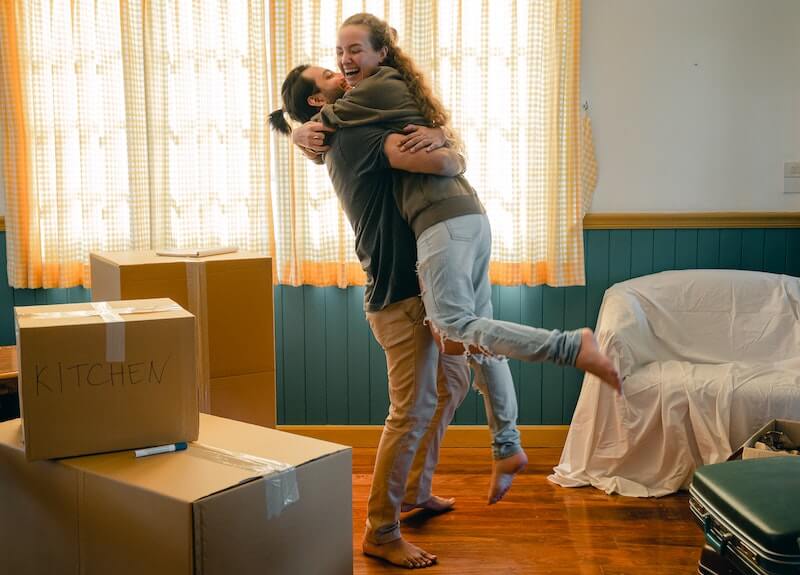
Your credit score and credit history
Getting the best rate on a mortgage starts with your credit score and your credit history. Both are a crucial part of obtaining any type of finance, including a loan, a credit card or, of course, a mortgage. Basically, the lender’s underwriting team will use your credit history and current credit score to measure how much risk you pose as a borrower, as well as the rate they are willing to offer you.
If you are unaware, your credit score essentially summarises what is in your credit report, represented by a number. The highest indicating number is 999 and the lowest is 0. You can use your credit score to understand how your credit history or report might look to a lender. With this knowledge, you can attempt to boost your credit score by doing a number of recommended things including always paying off any debts on time and in full, and not applying to too many lenders at one time.
Pay the largest deposit you can reasonably afford
This may seem strange to some, but the larger your initial deposit is, the less you will ultimately need to borrow. Furthermore, your mortgage provider will see you as less of a credit risk if you put down a larger amount at the deposit stage. In exchange for a bigger deposit, you will usually be offered a lower interest rate.
Lenders tend to offer the best deals to those who put down 40% or more. If this is unrealistic for you, you can usually find good deals with a deposit of 20%. However, if you go any lower than this, expect the interest rates to shoot up.
Shop Around
Like when looking at any type of loan, your best bet is to shop around to compare what deals are available to you. Your bank is often a starting point when thinking about taking out a mortgage. If you are already a member of the bank you approach, you may find that they offer you discounts or rewards – however – this might not always be the best deal.
It is no secret that a mortgage is one of the biggest financial commitments you may ever take out. Therefore, it is very important to do your research and not just jump on the first deal you find which looks alright.
Beware of fees
The interest rate that you receive will have a large impact of your monthly repayments as well as the overall cost of your mortgage. However, this shouldn’t be the only thing that you consider. Be aware that with a mortgage comes many fees, some which are not so explicit. In some cases, the overall cost of the fees may actually outweigh the benefits of agreeing to a mortgage with a lower interest rate.
The three most common fees are:
- The arrangement fee
- The overpayment fee
- Early repayment fees
The arrangement fee is what you will pay your lender in order to cover the administrative cost of setting the mortgage up. This fee can be upwards of £2,000.
The overpayment fees involve overpaying your mortgage. This can save you money in interest and help you to repay your mortgage sooner. It is typical that lenders will let you overpay by up to 10% of the outstanding amount each year. However, some lenders want to dissuade overpayment and put a fee in place to ensure that it is not worth it.
The early repayment fees are similar to overpayment fees in that they are in place to dissuade you from paying off your mortgage early. The reason for this is because the lender will lose out. Not all lenders have the fee in place, so check this out before filling in any applications.
Where Do Celebrities Live in London?
London is not only one of the coolest places in the world to live, it is also one of the most expensive. Naturally, alongside the entertainment industry being focussed there, Celebrities are therefore drawn to living in England’s Capital city.
But it is no secret that London is a vast place, so which spots are bursting with famous faces? Celebrities tend to want to live in private properties with access to green spaces as well as shopping and lavish restaurants. It is no surprise then that celebrities tend to gravitate towards certain areas in London which offer a vibrant and private lifestyle, including the following:
- Kensington and Chelsea
- Richmond
- Notting Hill
- Highgate
- Fulham
- Clapham
- East Dulwich
Here, Octagon Capital take a look at these celebrity-heavy neighbourhoods in London.
Kensington and Chelsea
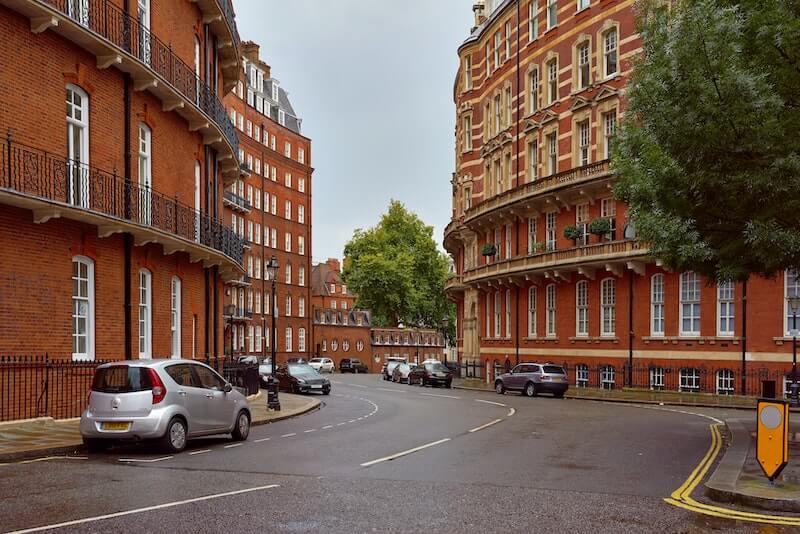
Probably one of the better-known areas where the rich and famous reside is Kensington and Chelsea. It is known to house some of the most outrageous basement bunkers which are complete with swimming pools and private bars.
The townhouses in this area often have the added feature of rooftop gardens and state-of-the-art fixtures.
Some famous people who live in this area include British Rapper Stromzy, rock legend Eric Clapton, Madonna and Rowan Atkinson. Fashion designer Paul Smith’s Kensington based mansion is worth a whopping £135 million!
Richmond
Richmond is famous for big pads and famous faces. An extremely expensive place to buy or rent, it is a haven for the UK’s celebrities.
These celebrities include Mick Jagger, Tom Hardy, Pete Townsend, Jerry Hall, David Attenborough and Rick Astley. Brad Pitt and Angelina Jolie has bought a £16 million property here back when their marriage remained intact.
Notting Hill

Notting Hill is home to wonderfully colourful homes in rows, which are both highly desirable and highly expensive. Notting Hill is particularly famous following the 1999 romantic comedy of the same name, starring Julia Roberts and Hugh Grant.
This affluent area of west London is prized for the renowned market where you will find plenty of vintage Chanel, Hermes and Dior.
Music stars Robbie Williams and Bjork are said to reside in Nothing Hill.
Highgate
Situated in North London, Highgate is one of the sleepier areas of London – this is probably why so many celebrities love it there. It is slightly out of the way of the hustle and bustle of central London.
Famous faces who live there include supermodel Kate Moss and actor Jude Law.
Fulham
The attraction of independent boutiques, notable hangout spots like the Durrell Arms and the fabulous brunch spot, Manuka Kitchen, is enough to bring in the celebrities to the area on a permanent basis.
There is an area of Fulham Road which is known to the locals as “The Beach”, which is beautiful and a place you would want to spend your time. You will find this area lined with convertible porches parked outside of galleries and gastropubs.
Clapham
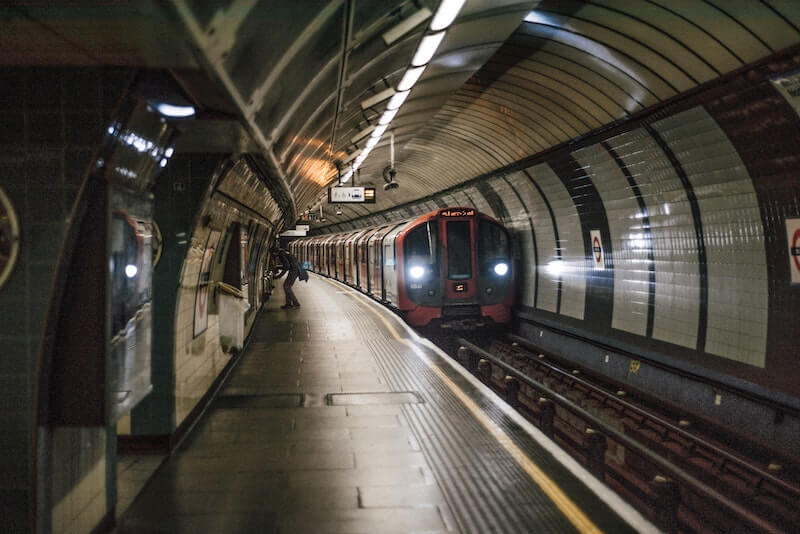
An up and coming area of south London is Clapham. It has been dubbed one of the most fashionable areas to live and is certainly popular with the younger generation, as well as celebrities.
It is a usual sight to stroll through Clapham Common on a Saturday morning and see people working out in the sun, taking their dogs for a walk or sunbathing on the grass.
Notable and powerful celebrity women seem to favour Clapham, including Margot Robbie, Vivienne Westwood, J.K Rowling and Vanessa Redgrave.
East Dulwich
Located in South East London, East Dulwich is an area which is known for being in the city, but feeling like a village. Because of the village vibe and the location is slightly outside of central London, a host of celebrities’ call East Dulwich home. To name a few, Tom Cruise, James Nesbit and Steve Frost have all had property here at one point or another.
Things to consider when looking to buy a house
Buying a house is an exciting step in your life, but it is also one of the biggest financial commitments to will ever make most probably. Therefore, you have to make sure you do it right – taking into consideration everything possible before making the jump. A big financial commitment where small mistakes can cost you even more than expected.

Nonetheless, with the introduction of the government scheme Help to Buy, owning your own house is becoming more of a reality for more people. In consequence, there are more people in need of advice as to what they should be looking out for when going about buying their first property.
You wouldn’t just spend 20 minutes making a decision about a property which you are going to live in for the foreseeable future, or even for the rest of your life! Some would, which is why we have put together this guide which highlights some of the key things you need to look at when visiting a potential property.
Should you be buying at this moment in time?
Look at the current climate of the housing market. It is true that we have had some devastating years where house prices were so high people simply couldn’t afford to move and years where people were receiving only a fraction of what their house was actually worth.
As a buyer, you should concentrate on whether buying is affordable and will ultimately be the best decision for you in the long term. This is better than buying in the mentality that you should be a homeowner by a certain stage in your life.
Mortgages
With buying a property comes a need for a mortgage, for most of us anyway. Buyers need to factor into the budget how much they can realistically spend each month paying back their mortgage.
As mentioned previously, the Help to Buy scheme has been in place for some years now. As a feature of this, the government have helped to increase the choice of mortgages for people with 5% to put down. However, borrowers will pay a premium at this level. Mortgage deals become a little for competitive if you have 10% or 15% to put down and the really decent rates come in once you can put down 25%.
If you are in need of money to buy a house now but do not have time to wait for a mortgage to clear, an option for you might be a bridging loan. A bridging loan is a type of short-term finance which essentially ‘bridges the gap’ between you and the mortgage, allowing you obtain the property without a mortgage being cleared. Rather than losing a potential property, you can apply for a bridging loan and receive the money in one lump within a few working days. Once the property has been purchased and has access to more finance, you will be required to repay the loan.
Check out the overall neighbourhood
When looking to buy a house, the location should be just as important to you as the property itself. There is no point living in a lovely house in an area which is worn-down and crime-ridden. At the end of the day, you can do a house up in a nice area, but you cannot move a house out of a bad one.
We advise that you should take some time after finding a property that you like to explore the neighbourhood. See what it has to offer – are there shops, restaurants, pubs, parks and so on? What are the local schools like? Is the town clean and presentable, or is it covered in litter and graffiti?
Is the building itself structurally sound?
When viewing a property, you should look out for things like big cracks in the walls as well as smaller problems like damp which may affect the structure and the living environment. Hairline cracks should be nothing to worry about and most places will have these, it is the bigger and more serve ones you should look out for.
You should also look at things like where the extension joins, bay windows and end-of-terrace walls – all of these can start to bow away from the rest of the house if not done well.
The roof is also an area of concern for buyers. Replacing a roof can be extremely expensive and you may not have the budget to do this on top of buying the property. A roof should last about 15 to 20 years, so you should check with the seller how old the roof actually is before making an offer because an old roof may give you grounds to knock the price down.
Evaluate how much storage there is
Often, buyers get so swept up in the excitement of the buying process that they miss out whether the properties they look at have sufficient storage for their amount of personal possessions.
Storage is a massively valuable asset on a house, it increases the monetary value and makes it a nicer environment to dwell in.
When looking around the property, you should think things like “where will I keep my vacuum cleaner, towels, beddings and miscellaneous boxes and products?” It is not impolite to ask the homeowner where they store things like this, after all, it is a selling point to have good storage so they will probably be more than happy to show you.
In addition to this, you should evaluate whether the rooms are big enough for your needs? The way that it has been styled by the sellers may make the rooms appear bigger than they are, but you should consider what the rooms would look like with your furniture in them.
Is the plumbing good?
Run the taps to check out what the water pressure is like. Ask the homeowner if the pipes are insulated and make sure that they are not made of lead as you will have to replace these as soon as possible. Check the radiators and the boiler work and aren’t too old, again these might need replacing adding more cost on to your move.
Things to look out for when buying a property aboard
It is usually the case, understandably, that buying a property overseas is going to be more complicated than simply buying locally. If you are looking to acquire a property abroad, you may be wanting a holiday home situated in the sun or may be looking to actually completely relocate outside of your domestic country.
Second properties abroad are great for saving money on holidays in the long-term, as you never have to worry about finding and forking out for accommodation when you can simply just jet off to your own private home which is self-catered – no need to seek out an all-inclusive deal!
Plenty of people choose to find a home in a different country as part of their retirement plan and live out the rest of their lives in luxury, soaking up the sun after years of hard work.
There are a number of things which you need to consider when aiming to purchase property abroad. These include certain risks as well as working out how you are going to get a mortgage overseas.
In this guide, we will explore the difficulties you may face when buying abroad and provide advice as to how to overcome these potential barriers in your way, including:
- Getting to know the risks of buying abroad
- Getting a mortgage for your property based overseas
- Making sure you've researched the area
- Consider a time-share or joint ownership

Get to know the risks of buying abroad
Tax
Make sure that you are aware of how much tax you will be required to pay. You need to account for this when deciding if you can afford to move abroad or take up a second home overseas. If you have two properties, you will be paying tax on the one in the UK and the one in the country which you have opted to purchase a property in.
Check the paperwork
Be sure to acquire all the necessary paperwork beforehand. This includes permissions, licenses and planning consents – these should be in place before you sign any kind of contract or agreement which binds you to the property.
You also need to know your Visa rights. In most countries, you are not allowed to live in your property for the whole year if you are on a standard Visa. You will have to see what the rules are in the country which you are choosing to buy in before you look to buy at all. It may be that you can only stay for a few weeks or months at a time.
Exchange rates
You need to be aware of the risk of the exchange rates of any given country. Even just a small shift in the exchange rate can have a profound effect on the value of your property. The exchange rates changing could even mean that your property and/or your mortgage repayments practically unaffordable overnight.
Getting a mortgage for your property based overseas
If it is the case that you have a mortgage where you are going to be making the repayments in a foreign currency, it is compulsory for the lender to make you are of the exchange rate if it fluctuates by more than 20%. Any fluctuations can seriously affect your ability to meet any future mortgage commitments which you have signed up for.
Therefore, in order to protect borrowers from falling victim to this, lenders must offer the borrower the option to repay the mortgage in a different currency to the one it is currently being paid in.
If you do not have time to get a mortgage sorted before completing on a property, consider a bridging loan. If you are wondering what a bridging loan is, essentially, A bridging loan is a type of short-term finance which basically acts to ‘bridge the gap’ between you and the mortgage, allowing you to obtain the property without a mortgage being cleared. Rather than losing a potential property, you can apply for a bridging loan and receive the money in one lump within a few working days. Once the property has been purchased and has access to more finance, you will be required to repay the loan.
Make sure you have researched the area
You may be set on a particular country, but are you clued up about the area you are looking in? It may be time for an excuse for a quick holiday to explore the area! You will want to look at the local facilities; is it close to a food store? Are there nice places to eat and drink around, if that is important to you? What things are there to do in the area? And what are the transport links like?
If you are not set on a particular country but just know you want to buy abroad, look at the cultures, safety and economic and political stability of a territory before you make the jump into signing anything. It is not wise to look at getting a holiday property in somewhere which is known for acts of terrorism, war and political unrest. Not only will you probably feel less safe visiting your property and therefore it might not make the purchase worth it in the long-term, the value of the house will be low due to these factors. So yes, you may be able to buy it for a cheap price, but when it comes to selling it you are likely to make a loss.
Consider a time-share or joint ownership
If you are not going to be in your overseas property all of the time, why not consider saving some money and partaking in a timeshare or joint ownership. Buying with friends, family or finding people through an organised group is sure to open the door to plenty more opportunities as to the type of property you can realistically afford to buy, as well as a more premium location.
The way this works is that you have joint-ownership of the property, all parties having full use of the home. You can arrange to book it off for yourself or you can all enjoy it together. This way, you can have a private holiday home for a fraction of the price and it is still being used, cleaned and maintained when you are not there if someone else is from your agreement.
What is Asbestos and how do you get rid of it?
Asbestos is a naturally occurring mineral made up of extremely small fibres. It was used in building construction commonly between 1945 and 1985 but was banned from use when the risks it can potentially bring were identified.
On average 20 tradesmen die every week as a result of asbestos exposure. Building contractors, plumbers, electricians and decorators are particularly at risk because they might interact with asbestos without realising that they are.
The management and responsibility of asbestos are laid out in Regulation 4 of the Control of Asbestos Regulations 2012.
You are most likely to uncover asbestos in a number of places:
- Sprayed asbestos and asbestos loose packing, which is being used as fire protection
- Moulded or pre-formed lagging used as thermal insulation to pipes and boilers
- Asbestos Insulating Board used for fire protection and thermal insulation or as partitions and ducting
- Asbestos cement products which have most lily been moulded into corrugated roofing sheets, cladding, guttering, downpipes, flues and water tanks
If asbestos material is disturbed or if they are in poor condition, they release a huge number of needle-shaped fibres which can be inhaled into the lungs. These fibres can then lodge in the lungs and can lead to several diseases a number of which are fatal, namely lung cancer, asbestosis or mesothelioma. Click here, to learn more from the government.
Frighteningly your home has a 50% chance of containing asbestos but experts say that if the asbestos is not disturbed you are at little risk of harmful exposure, but the sites or pockets where asbestos may be harbouring must be regularly checked as a preventative measure
Who is responsible for maintenance or repair?
If you are responsible for maintenance or repair of premises or equipment, you are the duty holder and will need to follow the next steps, but this only applies to the following:
- All non-domestic premises
- The common parts of domestic premises
Testing for Asbestos
If you are not planning on undertaking any works and you have had your premises checked previously for asbestos you do not need to worry. But if on the other hand, there are a number of surveys you can have performed to determine asbestos’s presence:
- Asbestos management survey
- Refurbishment/Demolition survey
- Brownfield Sites asbestos survey
- Old Equipment pre-2000 guidance service
N.B. Before undertaking any asbestos work you are legally obliged to inform those at risk of any works you have planned.
Removing Asbestos
We highly recommend bringing in a professional to remove asbestos but if you believe you are qualified to remove it yourself then there are a number of steps you can take to do so.
The link below will take you to a website which will allow you to get in touch with someone to help you remove the asbestos from your home.
Before beginning asbestos removal work, however, it is essential that either yourself or contractors complete the ASB5 form and return it to the Health and Safety Team before starting.
Competence for removing asbestos is something that is formulated over time not just by taking a simple course, however, the recommended information is often learnt through the book in the link attached.
If you are in the process of moving house, consider taking out a bridging loan to save yourself the stress of waiting for a mortgage to clear and potentially losing your property altogether.
What happens if you have squatters?
Squatting is when a person enters a property on purpose without permission and lives there or has plans to live there. Squatting is occasionally referred to as “adverse possession”, but this is not a term you are likely to hear colloquially.
It is important to remember that squatting in a residential building is illegal. It can likely lead to 6 months in prison or alternatively a large fine, or in a worst-case scenario both.
A person who enters a property with the permission of the landlord or owner is not considered a squatter.
N.B. If you are renting a flat or house and you are late with your rent but you continue to live at the property you are not squatting if you continue to reside there.
What is legal and what is not because slightly more confusing when looking at the protocol surrounding squatting in a non-residential building or land. Whilst it isn’t technically a crime, it is a crime to damage the property.
It is also typically a crime not to live a property when you are asked or instructed to do so by a following number of persons:
- The owner
- The police
- The council
- A repossession order
Why do people squat?
Before dealing with the squatter it might be relevant to consider the motivations behind people choosing to squat.
The United Kingdom has a long history of issues with squatting however things became critical in the 1960s and 1970s as the youth became more interested in alternative lifestyles and became more politicised. However, these lifestyle squatters are in the minimum and it is mostly rough sleepers or other vulnerable groups who will be squatters. According to the homeless charity Crisis, 39% of homeless people have squatted for some period of time.
Removing Squatters
You can remove squatters uses two main processes. The first is called an Interim Possession Order or making a claim for possession.
N.B. Do not try to remove the squatters yourself by threatening them verbally or using physical force, because if you do this you are technically committing a crime
Interim Possession Orders
You are only eligible to apply for an IPO if it has been 28 days or fewer that you discovered your property is being squatted on.
The IPO has to be filled in and then sent to a county court. The court will then send a confirmation of receipt within a few days and they will also send you a number of extremely important documents that you must present to the squatters within a 48-hour time frame.
Once the squatters have themselves received the IPO they are at risk of going to prison if they don’t leave your property within 24 hours or they don’t stay away from your property for 12 months.
If you want to the final possession of the property in question you have to file a claim for possession. You can do this either as a part of your IPO application or separately online, it depends on your preference but both are valid.
N.B. You cannot use an IPO if you are also claiming for the damages caused by the squatters if this is the case you should make a normal claim for possession; or furthermore, the IPO does not apply if you are trying to evict former tenants, sub-tenants or licensees
N.B. It is important to remember that to have an interim possession order can often be as costly as a couple of thousand pounds.
Squatters' Rights
A squatter who has been residing or a property or piece of land can potentially become the registered owner even if they’ve occupied without the owner’s permission.
As a squatter who are eligible to apply for this if you fulfil the following conditions:
- Either one or a succession of squatters have occupied the property for an uninterrupted period of 10 years or more
- You or those who came before you have acted as if you were indeed legal owners of the poetry
- You or any of the predecessors didn’t have the owners permission
How to keep squatters off your property?
As if fairly obvious having efficient security is one of the most crucial factors to preventing squatters from coming to settle on your property. If they force their way onto your property they have caused physical damage and this is an offence. If you are leaving your property for an extended period of time it might be worthwhile informing neighbours and other relevant individuals so they can keep an eye out on your property. There is a third option, which is to sign your property over to one of the numbers of UK property guardian schemes which look after properties of personal and commercial use on behalf of the owners.
What do you do if you suspect there are squatters in your neighbour's property?
If you are of the suspicion that someone might be squatting in your neighbour's house and you are aware that they have not asked for anyone to come stay there whilst they are away, it is the best course of action to call the police.
Where will a squatter live after they have been removed from the property?
If you were previously a squatter and then are removed from the property and have nowhere to reside there is the chance that the council may be able to rehouse you or help organise alternative residential plans for you.
For those who are in the process of buying a property but need to complete before they are likely to get a mortgage approved, see our information on bridging loans.
